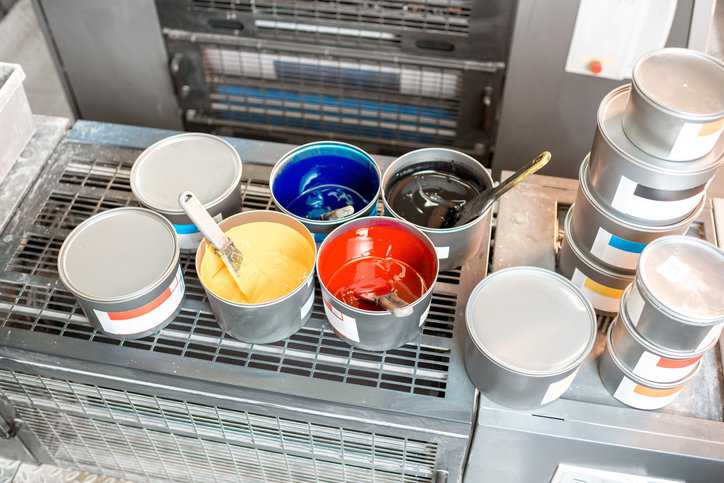ISO 2431:2019— Viscosity Flow Cups for Paints and Varnishes

Viscosity flow cups are easy-to-use instruments for determining a fluid’s thickness and flow resistance. Determining fluid viscosity is helpful in corrosion prevention. A highly viscous substance is less likely to cause corrosion because it has a lower rate of freely moving molecules to react with a metallic surface. ISO 2431:2019— Paints And Varnishes – Determination Of Flow Time By Use Of Flow Cups covers a test method for the flow time of paints, varnishes, and related products.
Determining the Viscosity of Paints with Flow Cups
Viscosity describes the internal friction of a liquid and is relevant wherever liquids are conveyed, pumped, spread, or sprayed. Viscosity flow cups are easy-to-use instruments of anodized aluminum with a stainless-steel orifice. Flow cups are designed to accurately measure the viscosity of paints, inks, varnishes, and similar products. This is done by introducing a sample of the fluid into a container with a hole in its bottom and recording the time it takes for the container to empty when draining the fluid through the opening.
The process of flow through an orifice can often be used as a relative measurement and classification of viscosity. This measured kinematic viscosity is generally expressed in seconds of flow time, which can be converted into Centistokes using a viscosity disc calculator. The faster the fluid is drained, the less viscous the fluid is and vice versa.
What Is ISO 2431?
ISO 2431:2019 specifies a method for determining the flow time of paints, varnishes, and related products that can be used to control consistency. The standard specifies four flow cups of similar dimensions, but having orifice diameters of 3 mm, 4 mm, 5 mm, and 6 mm. Additionally, it gives two methods for checking the flow cups for wear and tear.
The method described in ISO 2431:2019 is limited to testing materials for which the breakpoint of the flow from the orifice of the flow cup can be determined with certainty. This point is difficult to determine and reproduce for materials with flow times near the upper limit of the measurement range (100 s) due to slowing-down effects.
This standard does cover flow cups with a replaceable jet, since the close tolerances on the supply of the material under test to the jet are not met. ISO 2431:2019 also does not cover commonly used dipping flow cups.
How Long Does Paint Take to Dry Between Coats?
Multiple factors such as ventilation, humidity, and temperature impact the drying time of paint. The best temperature to paint a room in is a warm room with low humidity and good airflow. Other factors such a paint type impact the drying time of paint, and there are three primary types of paint:
- Oil-based: dry to touch in 6-8 hours, ready to recoat in 24 hours, and cures in about 7 days.
- Latex: dry to touch in about 1 hour, ready to safely recoat in 4 hours, and cures in about 30 days.
- Water-based: dry to touch in 30 to 35 minutes, ready to recoat in about 1 hour, and cures in about 1 to 2 weeks.
Water-based paints dry faster than oil-based paints because they are thinner and easily affected by airflow. A thicker paint (like two-in-one paint and primer) takes longer to paint and dry because it is significantly thicker. Sheen is another aspect to consider within paint type. Matte paint dries faster than glossier paint, and using a glossier paint can add up to an hour to your total dry time.
Once paint dries, however, it may still not be ready for everyday use because for paint to be considered dry, enough solvents must evaporate so it feels dry to touch. This means that the paint also has to cure. Paint does not cure nor reach maximum hardness until days after the paint is dry—meaning whatever item is newly painted is not ready to withstand everyday day use until it has fully cured.
ISO 2431:2019— Paints And Varnishes – Determination Of Flow Time By Use Of Flow Cups is available on the ANSI Webstore.






